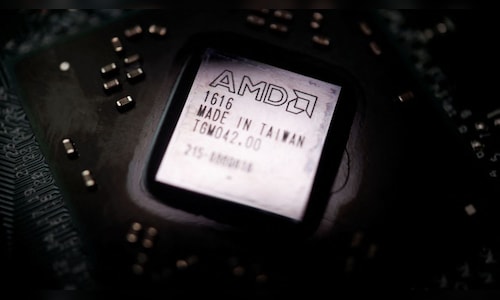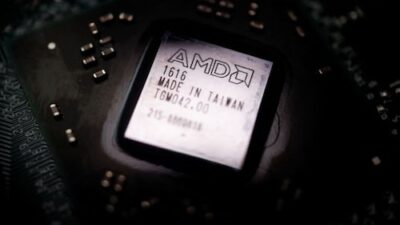The company aims to bolster India’s semiconductor and AI ambitions by bridging the chip talent gap in this crucial market.
“There have been some discussions (concerning indigenous GPUs) but it’s premature to disclose specifics,” Jaya Jagadish, country head and SVP of silicon design engineering at AMD, shared with Moneycontrol in an exclusive interview.
India is in the process of developing its first indigenous graphics processing unit (GPU) and plans to unveil a prototype by the end of the year, as reported by Moneycontrol on May 14. The nation is targeting commercial readiness by 2030, marking a pivotal advancement toward self-sufficiency in advanced semiconductor technologies.
The Electronics and Information Technology Ministry (MeitY) has tasked the Centre for Development of Advanced Computing (C-DAC), an autonomous entity under the IT Ministry, with developing the GPU.
IT minister Ashwini Vaishnaw recently mentioned that India could potentially create its high-end computing chipset within the next three to five years, confirming discussions with multinational companies like AMD and NVIDIA for GPU co-development.
“We are certainly open to meaningful partnerships with the government. Our relationship with the government is essential… We are actively engaged with governmental initiatives. I was the chairperson of the Semicon India Future Skills Talent Committee, and we provided a framework for transforming raw talent into skilled engineers for the industry. We have been collaborating to address these gaps and strengthen the ecosystem,” Jagadish stated.
Regarding DLI participation, the executive noted that AMD would consider the opportunity if it aligns with their partnership and business strategy. “It must be substantial and align with our regional relations. If it makes sense, we are definitely open to exploring it,” she remarked.
The previous DLI scheme, initiated in September 2021 under ISM, allocated less than $12 million in net incentives over five years, limited to five selected companies.
Of the approximately 60 proposals submitted to MeitY, only 20 companies met the required criteria, with only a few securing fabrication orders for their design prototypes.
The ministry is now working on a new DLI scheme with increased incentives.
AMD is also contributing to India’s ₹10,000-crore AI mission, which has bolstered the country’s national compute capacity to over 34,000 GPUs. Several shortlisted AI cloud firms are employing AMD GPUs, alongside offerings from Nvidia, Intel, and AWS as part of this initiative.
“AMD is closely aligned with the India AI Mission via our open and scalable AI platforms that facilitateinclusive and impactful adoption. The AI mission in India is on a steep growth trajectory. Being a developing nation, India possesses a vast pool of developers, which is a unique advantage. We anticipate continued growth in AI adoption and consequently for AMD solutions. Our goal is to make our solutions ubiquitous, enabling us to tailor and provide best-in-class software and hardware,” she added.
$400-million India investment on track
AMD’s $400-million investment in India remains on schedule, with local R&D teams focused on advancing 2nm and 3nm chip technology in line with the company’s global strategy.
“We recently inaugurated the second phase of our campus, which accommodates over 3,000 engineers. This is AMD’s largest R&D center worldwide. We also announced plans to hire more than 3,000 engineers in the next five years, from 2023 to 2028, and I believe we are slightly ahead of that goal,” she noted.
AMD has operated its design center in Bengaluru for about 20 years and currently employs around 8,000 engineers.
“AMD boasts a diverse portfolio that includes CPUs, GPUs, FPGAs, software, IPs, and SoCs. Every business unit of AMD is represented in India, contributing significantly to the company’s overall product offerings. I can confidently say that no product from AMD is developed without the contributions of AMD India engineers,” she remarked.
India integral to global product portfolio
AMD India is experiencing year-on-year growth in its embedded solutions, driven by AI-led demand across the telecom, healthcare, and defense sectors. This demand is further propelling the adoption of AMD GPU and CPU solutions for cloud and enterprise applications.
“AI and semiconductors have increasingly become vital in the Indian ecosystem, and the growth is in line with that. We continue to evolve and strengthen our ecosystem. AMD India is not just an augmentation center; we have ownership, which has fostered significant innovation in engineering,” she stated.
She mentioned that AMD is collaborating across the ecosystem with customers, partners, independent software vendors (ISVs), and system integrators (SIs). “A major factor in our growth has been the expanding adoption of AMD technology by the top three hyperscalers operating in India. These organizations depend on our high-performance, energy-efficient platforms to support next-generation workloads and scalable data center infrastructure,” she added.
AMD India’s objectives are fully aligned with its global parent company, without any distinct local targets. The chipmaker is driving comprehensive growth in CPUs, GPUs, FPGAs, IPs, SoCs, and software to meet the surging market demands, particularly as AI demands an ever-increasing computational capacity.
AMD India will persist in supporting the global portfolio while responding to similar trends in the international market.
AI adoption is rapidly expanding across industries such as telecom, healthcare, and defense. With its diverse product lineup and open-source platforms, AMD is well-positioned to make a substantial impact, the executive added.
Startup funding, indigenous IPs
The head of AMD India expressed appreciation for the growing focus on semiconductors, noting that the sector was relatively overlooked a decade ago but has now become nationally significant, partly due to lessons learned from the COVID-induced chip shortages.
While the renewed emphasis on semiconductor manufacturing is promising, Jagadish emphasized that a robust ecosystem, including design, manufacturing, supply chain, and IP creation, is essential for sustainable growth.
“Numerous multinational corporations have invested over the past three decades in India, and we have reached a stage where we possess a mature design ecosystem. Manufacturing still needs development and requires design support. Additionally, we need to prepare more local designs ready for manufacturing in India,” she added.
She also underscored the importance of nurturing local startups, developing indigenous IPs, and training India’s engineering talent to fully capitalize on semiconductor opportunities.
“We need more local startups to engage in complex designs and develop IPs (intellectual properties), which are the foundational elements for products. IPs must be locally registered in India. Focusing on the startup ecosystem is crucial,” she said.
AMD is also supporting and funding startups through its incubation program in India, although the company aims to be selective in its choices.
“We are currently supporting a startup focused on low-power interconnect technology. It must be relevant to our work and make business sense for us. We are certainly open to supporting and funding startups within that framework,” she concluded.



